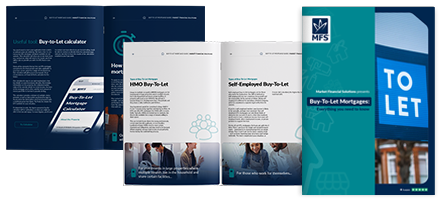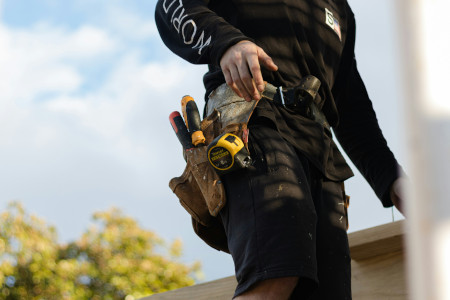Disclaimer
Market Financial Solutions are a bridging loan and buy-to-let mortgage provider, not financial advisors. Therefore, Investors are encouraged to seek professional advice. The information in this content is correct at time of writing.

The relationship between a landlord and a tenant can be complex. Understanding each party’s responsibilities is crucial for maintaining a healthy and harmonious tenancy. In this blog, we’ll explore the legal and practical aspects of a landlord vs tenant relationship. Who is responsible for what in a rental property?
Landlord vs tenant: who is responsible for mice?
There are several factors that determine who is responsible for infestations of mice or other pests. This could be the terms of the tenancy agreement, local laws and regulations and the cause of the infestation.
Generally, landlords must ensure that there is no infestation when a tenant moves into a property. As such, it is the landlord’s responsibility to get rid of the mice or other pests at the start of a tenancy.
However, if the infestation occurs at another point throughout the tenancy, the cause determines the responsibility.
For instance, if mice have got into the rental property as a result of structural issues or ineffective waste disposal systems, then the responsibility would – for the most part – fall to the landlord to cover the costs of getting rid of the infestation.
However, if the cause is due to the actions or neglect of the tenant, then they may be liable. For instance, if a tenant leaves food out regularly or doesn’t report the early signs of a pest infestation, they would be held responsible.
In general, it is important for landlords and tenants to communicate clearly and work to resolve the issue together.
Landlord vs tenant: who is responsible for condensation, mould, and water damage?
Any rental property must comply with the Homes (Fitness for Habitation) Act of 2018.
If condensation, mould, or water damage is a result of the landlord’s failure to maintain the property, he would be responsible for addressing the issue. This could include inadequate ventilation and insulation, as well as addressing any structural issues. In this case, the landlord needs to cover the costs of repairs and remediation.
However, the issue might be a result of the tenant’s actions or neglect. This could be failing to properly ventilate the property or causing water damage by overflowing a bathtub. Then the tenant may be responsible for addressing the issue and covering the costs of repairs.
Moreover, tenants also have a responsibility to report the early signs of mould, condensation of water damage. This way, the landlords can address the issue before more damage is inflicted on the property.
Landlord vs tenant: who is responsible for painting?
Typically, the responsibility of painting a property falls to the landlord. Especially in common areas like hallways or staircases. (This is particularly important in an HMO). Similarly, if the property needs painting at the start of a tenancy, then it would fall under the landlord’s remit.
However, the responsibility could fall to the tenant, if they damage the property’s paintwork by their actions or excessive wear and tear.
As such, it really depends on the cause of the need to paint the property as to who is responsible.
Is a landlord responsible for a tenant’s behaviour?
In general, a landlord is not responsible for a tenant’s behaviour. Tenants are expected to act in accordance with the terms of their lease agreement and local laws and regulations. However, a landlord may be held responsible for certain actions or behaviours of their tenants. This could be due to the landlord’s negligence or failure to take appropriate action.
For instance, a landlord might be aware of illicit or illegal activities taking place in the property. If they choose not to report it, they may be responsible to an extent for any damages or harm caused by the tenants’ actions.
Similarly, a landlord might be aware of the tenant’s disruptive behaviour to neighbours or other tenants like excessive noise. Failing to take appropriate action to address the issue, they may be held liable.

Landlord vs tenant: who is responsible for repairs?
Landlords must maintain the property’s structure, as well as the features and appliances they provide the tenant with.
This can include repairs to the roof, walls, windows, heating and electrical systems. Landlords also need to maintain the plumbing and drainage systems in the property and ensure its good working condition. Regular inspections and maintenance can prevent blockages and ensure drains are free from debris.
Sometimes referred to as ‘section 11’ repairs, they relate to section 11 of the Landlord and Tenant act of 1985.
Landlords are also responsible for ensuring that the property meets certain health and safety standards. They need to provide smoke alarms as well as maintain and inspect gas appliances. They can carry out a full fire risk assessment before a tenant moves into the property.
Tenants are typically responsible for keeping the interior of the property in good condition. They also need to report any damage or issues to the landlord in a timely manner. This can include minor repairs such as changing light bulbs or replacing batteries in smoke alarms. This could also involve maintaining cleanliness and hygiene within the property.
Tenants may be responsible for any damage or repairs if it’s their fault or through their negligence. For example, a tenant might accidentally damage a wall or carpet. Or they might cause a blocked drain, toilet or sink through flushing grease or inappropriate items. In these cases, they may be responsible for the cost of repairs.
Landlord vs tenant: who is responsible for commercial building insurance?
In general, the lease agreement determines the responsibility for commercial building insurance in a rented property.
If the lease agreement requires the landlord to arrange and maintain building insurance, it is the landlord’s responsibility. They need to insure property adequately against damage or loss caused by events such as fire, flood, or theft. The cost of the insurance premium, therefore, is typically included in the tenant’s rent.
In some cases, the lease agreement may state that the tenant is responsible for the building insurance. This may be the case when the tenant has a long-term lease. Or – less commonly – maintains a large proportion of a property (i.e. a retail unit or office space).
Who is responsible for cleaning windows and cleaning the chimney?
If the property’s windows are easily accessible and can be cleaned safely from the ground level, the landlord should arrange for the windows to be cleaned on a regular basis. They can either hire a professional window cleaning service or clean them themselves.
However, if the windows are not easily accessible or cannot be cleaned safely from the ground level, the responsibility for cleaning them may fall to the tenant. In this case, the lease agreement should specify the tenant’s responsibility for the window cleaning.
The property might have an open fireplace or wood-burning stove. A dirty chimney could pose a fire hazard and increase the risk of carbon monoxide poisoning to tenants. Therefore, it’s the landlord’s responsibility that the chimney is cleaned regularly. It’s part of their duty to provide a safe and habitable living environment for tenants.
However, sometimes tenants may need to carry out chimney cleaning. Again, in this case, the terms of the tenancy agreement would determine this.
Landlord vs tenant: who is responsible for garden maintenance and landscaping?
If included in the original lease agreement, the landlord is responsible for maintaining the garden and landscaping. This includes mowing the lawn, pruning trees and hedges, and keeping the garden tidy and presentable.
However, the lease or rental agreement might specifically state that the tenant is responsible for garden maintenance and landscaping. In this case, the tenant would be expected to perform these tasks themselves.
Establish clarity
The rental agreement should clearly describe who is responsible for each aspect of the property’s maintenance. Should a problem arise during the tenancy, the responsible party should be clearer on what they need to do and implement solutions quickly. This can ensure that everyone involved is satisfied.
At Market Financial Solutions, we have options available for landlords to make it easier for them to hold up their end of the bargain. This includes bridging loans for refurbishment works, and deferred interest options. Landlord then can make improvements to a property before finding tenants.
The Complete Guide to
Buy-to-Let Mortgages
Everything you need to know
- Fundamentals
- Different mortgage types
- Useful tools
- Industry stats & more





